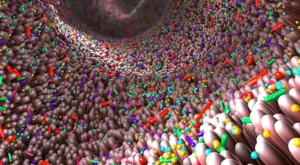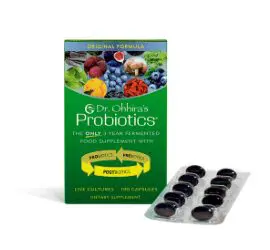A Visionary Scientist/Microbiologist 1936-2016
Iichiroh Ohhira was born in 1936 in Osaka, Japan. Like many Japanese, he grew up in a family that adhered to Buddhism, and, as a young man, he was ordained as a Buddhist monk.
He attended Okayama University in southern Japan and graduated in 1973 with a Master’s degree in agriculture. He continued his advanced studies, and in 1980, he received his Doctorate in Natural Science and Technology from Okayama University.
After graduating, Ohhira embarked on a career as a landscape architect. Buddhism is a religion that emphasizes that humans should live in harmony with nature. Iichiroh Ohhira had a deep love of nature, and over time, he developed an international reputation for his architectural designs that creatively incorporated and expressed the natural beauty of nature. His designs often contained walking paths, water features, and benches where people could meditate and enjoy the peacefulness of nature.
In 1976, Ohhira was invited to design a large “Freedom Park” in Kota Kinabalu, the capital of the Malaysian state of Sabah, which is located on the northern part of the island Borneo. The building of this park took five years to complete.
In September 1981, Dr. Ohhira was invited back to Malaysia to attend the park’s grand opening. While attending the ceremonies, Ohhira ingested some tainted food and became extremely ill. A local shaman attending the grand opening ceremony observed Dr. Ohhira in severe gastrointestinal distress and offered Ohhira several doses of a thick, black paste-like substance. Dr. Ohhira was astounded when his nausea and vomiting quickly ceased, and he realized that the shaman’s medicine “cured” him of his violent case of food poisoning.
Being a curious man, Dr. Ohhira asked about the origin of the strange substance and learned that it was a product created by fermenting local Malaysian fruits and vegetables. Dr. Ohhira was so fascinated by this medicine and how quickly it resolved his gastrointestinal distress that he took samples of the “miracle paste” back to Japan for further study.
Ohhira’s career was flourishing, but he continued investigating the samples he brought home from Malaysia. After several years, he realized that he did not have the scientific background to study the “miracle paste” effectively. Consequently, in 1987, at the age of 49, Ohhira abandoned his successful career as a landscape architect and returned to Okayama University, where he enrolled in graduate school. He graduated in 1990 with his Ph.D. in microbiology, which was the beginning of his remarkable second career.
Dr. Ohhira had learned that the Malaysian remedy was crafted in a process that over time enabled lactic acid bacteria to ferment a diverse range of Malaysian fruits, vegetables, mushrooms, and seaweeds. It took Dr. Ohhira ten years of research to develop the fermentation process that ultimately became the multi-year fermentation process used to produce Dr. Ohhira’s Probiotics.
Synchronicity
I’m fascinated by synchronicity. Several unusual coincidences occurred, which resulted in the creation of Dr. Ohhira’s Probiotics. Consider the following:
- If Dr. Ohhira had not become a landscape architect
- If Dr. Ohhira had not been invited to design the “Freedom Park” in Malaysia
- If Dr. Ohhira had not attended the grand opening ceremony at the park
- If Dr. Ohhira had not ingested tainted food and developed severe intestinal distress
- If the shaman had not participated at the grand opening, or…
- If the shaman had not seen Ohhira experiencing severe gastrointestinal pain, or
- If the shaman wasn’t carrying a bottle of the “miracle paste” to administer to Ohhira
That’s a lot of coincidences or a lot of ‘ifs’ linked together with just the right timing that resulted in the creation of Dr.Ohhira’s Probiotics.
Dr. Ohhira recognized that something magical happens when lactic acid bacteria ferment plant-based foods. He realized that the fermentation process allowed the bacteria time to convert substances in food into compounds he called biogenics. Today, we refer to these compounds as postbiotic metabolites.
Dr. Ohhira carefully selected 13 different strains of probiotic bacteria as the starter strains for his fermentation production process. He also spent years testing different kinds of food and differing lengths of fermentation time. Ohhira ultimately discovered that when the 13 strains of starter bacteria are provided with a diverse range of fiber-rich foods for a specific length of time, he got the highest concentration of postbiotic metabolites possible.
A Paradigm Shift
People have intuitively known that probiotic bacteria can provide health benefits for a long time. However, no one understood the mechanism of action. This mystery is starting to be solved. In recent years, an increasing number of scientific studies explain that the health benefits are not directly due to probiotic bacteria but are, in fact, due to the postbiotic metabolites that the bacteria produce when they ferment the fibers in plant-based foods.
Probiotic bacteria are like the workers in a factory. The intestinal microbiome ecosystem is the factory environment. The parts required for this manufacturing process are the fibers and polyphenols in plant-based foods. Polyphenols are a large class of compounds (over 8,000 have been identified) that occur primarily in multi-colored fruits and vegetables.
Dietary fibers and polyphenols are the primary foods for your probiotic bacteria. If you don’t learn to feed your probiotic bacteria well, they will not thrive and survive. A healthy microbiome consists of a diverse range of different species and strains of probiotic bacteria, producing a wide range of health-regulating postbiotic metabolites.
Postbiotic metabolites regulate the health of the microbiome ecosystem in your gastrointestinal tract. However, we are increasingly learning that postbiotic metabolites are master health-regulating compounds that influence every organ system, including your brain and immune system. I’ve written extensively about how postbiotic metabolites regulate your health in an article titled Postbiotic Metabolites: The New Frontier in Microbiome Science, published in the Townsend Letter. This medical journal focuses on complementary medicine. To read this article, do a Google search using Pelton Townsend Postbiotic.
Currently, Dr. Ohhira’s Probiotics are sold in 17 different countries, and Dr. Ohhira granted Essential Formulas the sole rights to distribute Dr. Ohhira’s Probiotics in the United States, Canada, and Mexico.
Dr. Ohhira’s fermentation process results in a final product that contains over 500 postbiotic metabolites. Consequently, Dr. Ohhira’s Probiotics is the #1 product globally for the direct delivery of postbiotic metabolites. This is why Dr. Ohhira’s Probiotics provide fast resolution of dysbiosis-related gastrointestinal symptoms.
The recommended dose for Dr. Ohhira’s Probiotics is two capsules daily. It is a user-friendly product because it is taken at any time, with or without food, and it does not need to be refrigerated.
For people who present with dysbiosis-related intestinal symptoms such as gas, bloating, inflammation, diarrhea, and/or constipation, we recommend purchasing a 30-count box of Dr. Ohhira’s Probiotics and taking two capsules twice daily for one week. This frequently results in substantial improvement. We call this Experiencing the Dr. Ohhira Advantage.
For more information, go to: www.EssentialFormulas.com.





